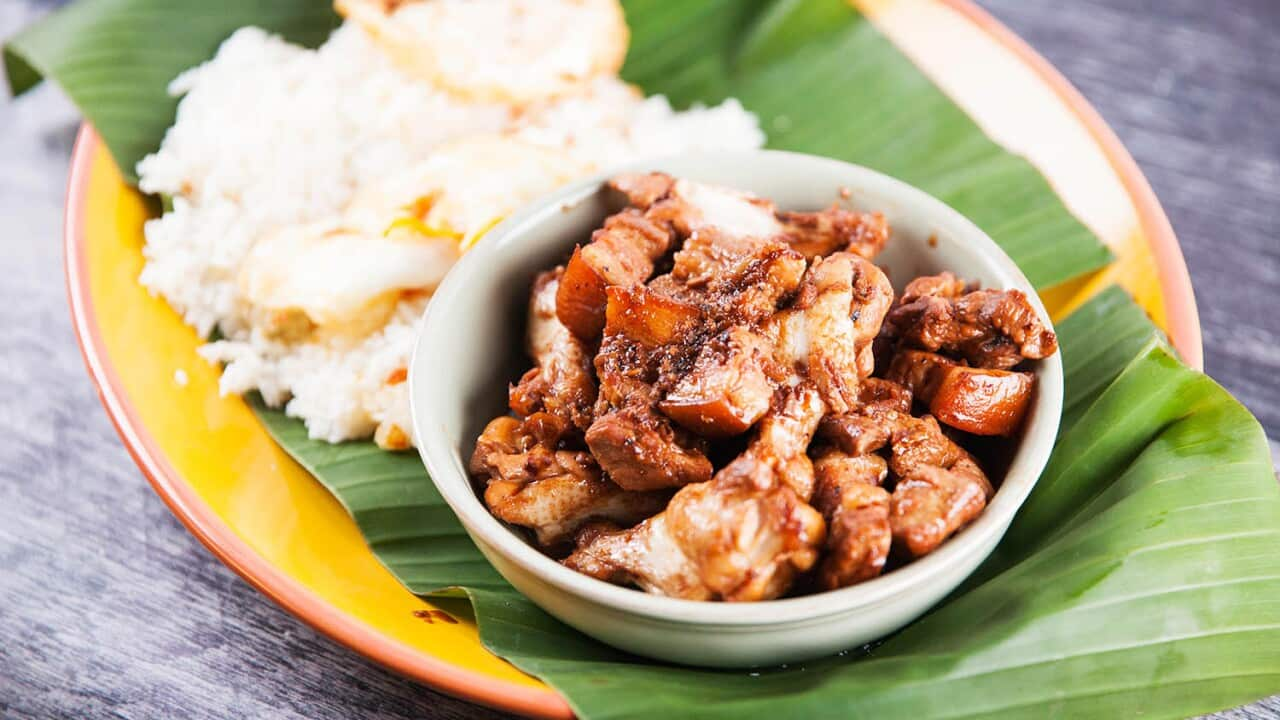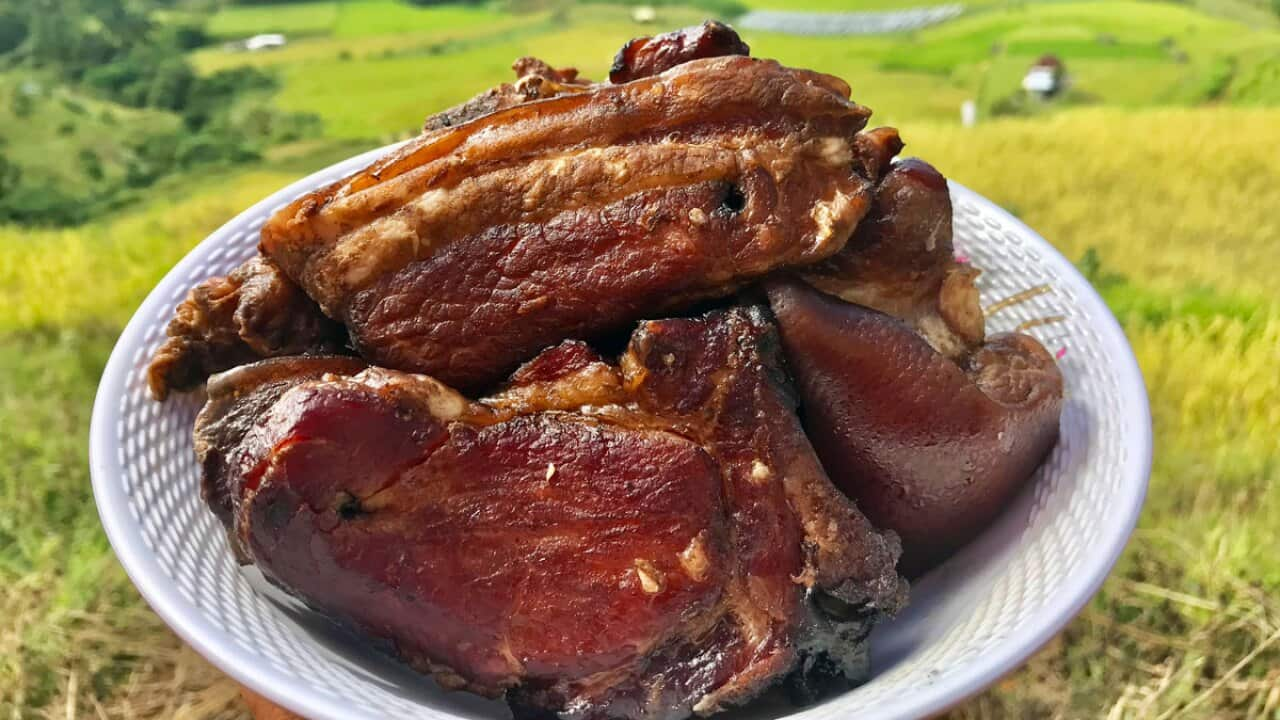Some say breaking down Filipino food by region is an impossible task. “With 7,641 islands and more than 100 ethnolinguistic groups, how do you describe Filipino food?” says , an author and Manila-based .
“The food of the Philippines varies widely by region. There are officially 18 regions, grouped together by commonalities in climate, terrain, culture and ethnicity,” write and in their cookbook, .
“Each region has its own specialities and nuances, with shifts in flavour, subtle swaps in proteins or vegetables.”
The variety of food, and the variety within recipes seem to defy grouping. Maybe that’s because the natural separation of islands resulted in differing cooking styles and dishes evolving in isolation. Maybe many layers of colonisation and trade shaped and morphed food across the archipelago.
“There are definitely differences between the regions,” says , owner and chef at , a Filipino restaurant in .
He can rattle off the origins of many famous Filipino dishes – sisig (minced, crisp pork cheeks and snout seasoned with calamansi citrus and chilli) from , (spit-roasted suckling pig) from , bangus (milkfish) from – but “it’s hard to break it down into regions”.
And dishes like or the ubiquitous add another layer of complication. Everyone has their own version of adobo, from town to town, even from lola (grandma) to lola.
“It’s hard to say we have a standard recipe for anything,” Casaje says. “It’s not like when you go to a Vietnamese eatery, and you see beef made with basically the same recipe. There are so many different varieties of adobo.”
Chef Nina Cruz of in Sydney’s west agrees. “Adobo is the national dish, but there are so many different versions with vinegar being the uniting ingredient.” The similarities stop there. “There’s adobo tuyo, which is a dry adobo that you simmer until the sauce disappears. Adobo sa puti is made with no soy sauce, just coconut vinegar that darkens as it caramelises. In , they use coconut milk.”
The similarities stop there. “There’s adobo tuyo, which is a dry adobo that you simmer until the sauce disappears. Adobo sa puti is made with no soy sauce, just coconut vinegar that darkens as it caramelises. In , they use coconut milk.”

There are many varieties of adobo throughout the Philippines. Source: Benito Martin
Cruz says the best way to assess regional food is to zoom out. “You can break the Philippines into three areas: in the north, in the centre and Mindanao in the south,” she says.
“Luzon has fertile soil, so there’s a lot of agriculture. In Visayas, seafood is easily accessible, and dried fish is especially popular. In Mindanao, Islam is the predominant religion, so many people don’t eat pork. They’re closer to Indonesia and Malaysia, so they have things like rendang and sambal.”
With 7,641 islands and more than 100 ethno-linguistic groups, how do you describe Filipino food?
But according to , a Philippines-based advocate of culture and food, it’s not so simple. “Maranao and Tausug cuisines are primarily found in Mindanao, and while both use coconut milk, the flavouring profile is different. Maranao is about palapa (a pounded native spring onion, ginger and chili condiment) while Tausug uses burnt coconut pounded with lemongrass, chillies and galangal to create a base paste. The flavours are different even when using the same protein.”
That it’s hard to generalise about Filipino cuisine is good thing, Carpio says. “Our diversity must be celebrated, and reductionist attempts will get in the way of that.”
But although she believes going beyond the “LuzVisMinda” trifecta is important, she says that there are commonalities within the main regions.
“One important flavour profile is sourness, mostly from vinegar, for example (Ilocano cane vinegar), or young coconut vinegar from Negros in Visayas. When you go to different provinces, the souring agents vary from , guava, green mangoes, kamias (a small tree with acidic fruit), which reflects households’ tendencies to use what’s available in markets.”
It's easy to focus on today’s Filipino cuisine, but Indigenous food is at the heart of Filipino cooking. Before the pandemic, Garcia travelled the country, learning about the Indigenous foundations of food. Take Mindanao, for example.
Our diversity must be celebrated, and reductionist attempts will get in the way of that.
“There are many things that are still preserved, but the basis is three traditional cooking methods: grilling, boiling and the kinilaw (‘cooking’ raw fish in citrus and vinegar). When I visited a Blaan community in Mindanao, they still cook on bamboo over the fire. They place native chicken in bamboo containers, add spring water and local herbs. In in Davao, they have a similar technique, but they add coconut milk, turmeric and lemongrass. Something about the bamboo over the wood fire… can you imagine? When I tried it, I thought, these are flavours of my country.”
In attempting to group Filipino food, individuality is impossible to avoid.
Garcia says that’s because Filipino food is about family. ”Filipino food is a very personal experience. You have to be invited into a home to understand the personal heart of the people behind that home.”
premieres Thursday, June 3 at 8:30 pm on SBS, with the full series also available then at SBS On Demand (full-series drop).
A taste of the Philippines

Everything you need to know about adobo









